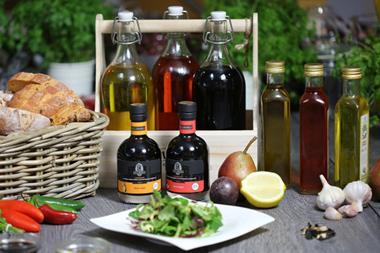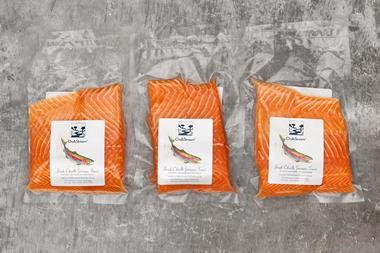Discovering South American asparagus was being sold in a store mere miles from fields full of the British crop was the catalyst for the East of England Co-operative’s Sourced Locally scheme.
“Lo and behold our asparagus was from Peru and I thought what are we doing?” says Roger Grosvenor, executive officer for retail at the group. “That week we went and had a word with a local supplier. We sold 33,000 bundles in the growing season.”
That was back in 2007, and the East of England Co-op has since expanded its partnerships under the scheme to work with 140 local and regional food producers to stock its stores across Norfolk, Suffolk and Essex.
And the latest figures back Grosvenor’s premise it’s not just price. “Customers look for local, they buy on provenance and they buy on quality.”
The initiative saw an uplift in sales of 22% last year, bringing the total to £14.6m, with local produce now accounting for 6% of total food sales. Furthermore, £34m of the money the scheme has brought in over the past eight years has gone back to local producers.
Producers such as Alaistaire Brice, of Suffolk-based Havensfield Eggs, who in four years has gone from supplying just 10 of the co-op’s 135 food stores to shipping out 12 pallets to its distribution warehouse each week, making the retailer his biggest customer by far.
“What it has given us is confidence. They give us that exposure on the shelf space of all their stores around Suffolk, North and Essex,” says Brice. “And because we’re a local business, and they’re supporting us, we then support other local businesses around us.”
In fact, such has been the impact upon local economies that the scheme has created an estimated 400 additional jobs across East Anglia, while the direct supplier-to-store relationship has enabled the group to improve lead times and product quality, it says.
Incremental growth
However, the scheme hasn’t been without its challenges. Initial discussions with Havensfield Eggs lasted 12 months for instance, in part due to the fact the eggs weren’t Lion coded, an accreditation required as standard by larger retailers. “Because we are the farmers, the producers, the packers, the graders, the wholesalers and the distributors we have that all in-house so we don’t need to become a member of that scheme,” explains Brice. The solution was to draw up their own assurance scheme to prove due diligence.
Another challenge, says Grosvenor, has been educating small set-ups on bringing a product to market. “A lot of these suppliers didn’t understand how to do barcodes, packaging, distribution, or due diligence. Internally we’ve got all those resources, and we put all those at the disposal of our local suppliers.”
That early support has benefited small-scale producers such as Jenny Gibbons, who makes Fruits of Suffolk jams and condiments from her Suffolk home. She initially felt nervous at working with such a large retailer. “I thought ‘if they order lots will I be able to keep up?’” she says. Incremental growth in the size of orders has helped her to adjust, however, and she now supplies 78 stores, and has taken on two full-time assistants.
“There’s got to be a lot of support at the beginning. And now there’s a deep-rooted trust between us and our supplier partners,” adds Grosvenor.
As proof, store managers running short of produce can just call local suppliers. “They can ring me if they’re running out, and I can run the odd box in,” says John Poll of JR & K Poll, who has supplied asparagus from his 500-acre farm in Leiston for three years now.
The team are always looking to add new lines to fill gaps across categories, adds Grosvenor. They’re just about to convert all stores to locally sourced bread, and have plans for petfood and cleaning products.
This success is something Lodge Farm’s Andrew Sturgeon, which delivers strawberries to 45 Co-op stores, hopes other retailers will cotton on to. “It’s a very obvious and simple scheme. How on earth has it all got so complicated with the other big retailers?”
Good question. And with provenance fast becoming a top priority for their customers, one that retailers are no doubt already searching for the answer to.
Sign in to comment on this article
Not logged in before? Register for FREE guest access today.
You will be able to:
- Read more stories
- Receive daily newsletters
- Comment on stories
Advert



















No comments yet